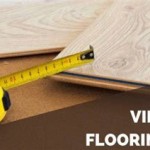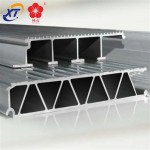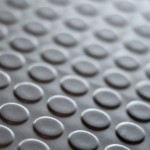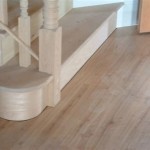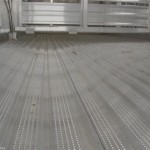Cost Differences Between Wood and Laminate Flooring
Selecting the right flooring for a home or commercial space involves numerous considerations, with cost often being a primary factor. Two popular choices are wood and laminate flooring, each possessing distinct characteristics that influence their price. Understanding the cost differences between these materials requires an examination of the various elements contributing to the overall expense, including material costs, installation fees, maintenance requirements, and long-term durability.
Wood flooring, often referred to as hardwood, encompasses a range of options derived directly from trees. These options include solid hardwood, engineered hardwood, and various wood species, each with its own aesthetic and price point. Laminate flooring, on the other hand, is a synthetic product composed of multiple layers fused together. Its construction typically includes a core layer, a decorative layer that mimics wood or other materials, and a protective wear layer. The inherent differences in materials and manufacturing processes significantly impact the cost comparison between these two flooring types.
Initial Material Costs
The initial cost of materials is a major determinant of the overall flooring expense. Generally, laminate flooring is considerably less expensive per square foot than wood flooring. This price difference stems from the materials used and the manufacturing processes involved.
Solid hardwood flooring is the most expensive option, as it consists of planks milled from a single piece of wood. The species of wood significantly affects the price; rarer and more exotic woods, such as Brazilian Cherry or Wenge, command higher prices than more common species like Oak or Maple. Furthermore, the grade of the wood, which refers to its appearance and the presence of knots or imperfections, also impacts the cost. Higher grades with fewer imperfections are generally more expensive.
Engineered hardwood flooring offers a more cost-effective alternative to solid hardwood. It consists of a thin layer of real wood veneer adhered to a core of plywood or high-density fiberboard (HDF). While the top layer provides the aesthetic appeal of real wood, the underlying core materials are less expensive, resulting in a lower overall cost compared to solid hardwood. The thickness of the veneer also plays a role in the price; thicker veneers offer greater durability and can be refinished, thereby increasing the value and cost.
Laminate flooring consists of several layers: a core layer typically made of HDF or particleboard, a decorative photographic layer that replicates the appearance of wood or other materials, and a transparent wear layer that protects the underlying layers from scratches, stains, and fading. The manufacturing process is less resource-intensive than producing wood flooring, and the materials used are generally less expensive. This translates to a significantly lower cost per square foot for laminate flooring compared to both solid and engineered hardwood. The thickness and quality of the wear layer impact the durability and price of laminate flooring; thicker, higher-quality wear layers offer greater resistance to wear and tear, increasing the longevity and associated cost of the product.
Installation Costs
Installation costs are another crucial component of the overall flooring expense. These costs can vary depending on the complexity of the installation, the condition of the subfloor, and the labor rates in a given area. While both wood and laminate flooring can be installed as DIY projects, professional installation is often recommended to ensure proper installation and longevity.
Solid hardwood flooring typically requires professional installation due to the complexity of the process. Solid hardwood can be installed using several methods, including nailing, stapling, or gluing the planks to the subfloor. The subfloor must be level and structurally sound to prevent issues like squeaking or buckling. The installation process requires specialized tools and expertise, adding to the overall cost. Furthermore, solid hardwood flooring requires acclimation to the environment before installation to prevent expansion and contraction issues.
Engineered hardwood flooring offers more installation options than solid hardwood. It can be installed using similar methods as solid hardwood, or it can be installed as a floating floor, where the planks are connected to each other but not directly to the subfloor. This floating installation method is often simpler and less expensive than nailing or gluing. However, proper subfloor preparation is still crucial to ensure a level and stable surface. Professional installation is generally recommended, but experienced DIYers may be able to install engineered hardwood using the floating method.
Laminate flooring is often considered the easiest type of flooring to install, especially with the advent of click-lock systems. These systems allow planks to be easily connected without the need for glue or nails. Laminate flooring is typically installed as a floating floor over an underlayment, which provides cushioning and sound insulation. While professional installation is an option, many homeowners choose to install laminate flooring themselves, reducing the overall cost. However, proper subfloor preparation is essential to ensure a smooth and level surface. Even with a click-lock system, precise cutting and fitting are required, and improper installation can lead to gaps, unevenness, and premature wear.
Maintenance and Long-Term Costs
Maintenance requirements and long-term durability significantly impact the overall cost of flooring over its lifespan. Different flooring materials require varying levels of care and have different lifespans, influencing the frequency of repairs or replacements.
Solid hardwood flooring requires regular maintenance to maintain its appearance and longevity. This includes regular sweeping or vacuuming to remove dirt and debris, occasional damp mopping with a wood-specific cleaner, and periodic refinishing to remove scratches and revitalize the finish. Refinishing involves sanding down the existing finish and applying a new coat of sealant, which can be costly but can significantly extend the lifespan of the flooring. With proper care, solid hardwood flooring can last for decades, potentially even centuries, adding to its long-term value. However, it is susceptible to scratches, dents, and water damage, which can necessitate repairs or replacements.
Engineered hardwood flooring shares similar maintenance requirements with solid hardwood, but it cannot be refinished as many times due to the thinner veneer layer. The number of times it can be refinished depends on the thickness of the veneer. Once the veneer is worn through, the flooring will need to be replaced. Engineered hardwood is also susceptible to water damage, although the plywood or HDF core is generally more resistant to moisture than solid wood. Proper maintenance, including regular cleaning and prompt attention to spills, can extend the life of engineered hardwood flooring.
Laminate flooring is known for its low maintenance requirements. It is resistant to scratches, stains, and fading, making it a durable option for high-traffic areas. Regular sweeping or vacuuming is typically sufficient to keep laminate flooring clean, and occasional damp mopping with a laminate-specific cleaner can remove more stubborn dirt. Laminate flooring is water-resistant but not waterproof, so spills should be cleaned up promptly to prevent damage to the core layer. While laminate flooring is durable, it cannot be refinished. Once the wear layer is damaged, the flooring will need to be replaced. The lifespan of laminate flooring varies depending on the quality of the product and the level of traffic, but it generally lasts for 10-20 years.
Beyond the costs mentioned above, other expenses can factor into the flooring decision. These include the cost of removing existing flooring, preparing the subfloor, purchasing underlayment (which is frequently separate for laminate), and buying necessary tools or equipment if opting for DIY installation. Additionally, consider the potential impact on resale value. While personal preferences vary, hardwood flooring is generally perceived as a higher-end material that can increase a home's value more than laminate.
Ultimately, the choice between wood and laminate flooring depends on individual needs, preferences, and budget constraints. Laminate flooring offers a cost-effective and durable option for those seeking a wood-like appearance at a lower price point. Wood flooring, particularly solid hardwood, provides a timeless aesthetic and long-term value, albeit at a higher initial cost. By carefully considering the material costs, installation fees, maintenance requirements, and long-term durability, informed decisions can be made to choose flooring that best aligns with specific requirements and financial resources.

Engineered Hardwood Vs Laminate Flooring

Laminate Vs Vinyl Flooring Costs Pros Cons Differences 2025

Laminate Flooring Vs Hardwood A Detailed Comparison Of Cost Durability And Style Palmetto Fl Ansbro Aldrich

Hardwood Flooring Vs Laminate Ventura

This Or That Laminate Vs Vinyl Ben Laube Homes

The Cost To Install Laminate Flooring In 2025 Nerdwallet

How Much Does It Cost To Install Laminate Flooring Guide 2024

Is Laminate Flooring Really Er Than Vinyl

Flooring Installation Cost Guide 2025 Average S By Type

Cost Of Diffe Flooring Types
Related Posts

